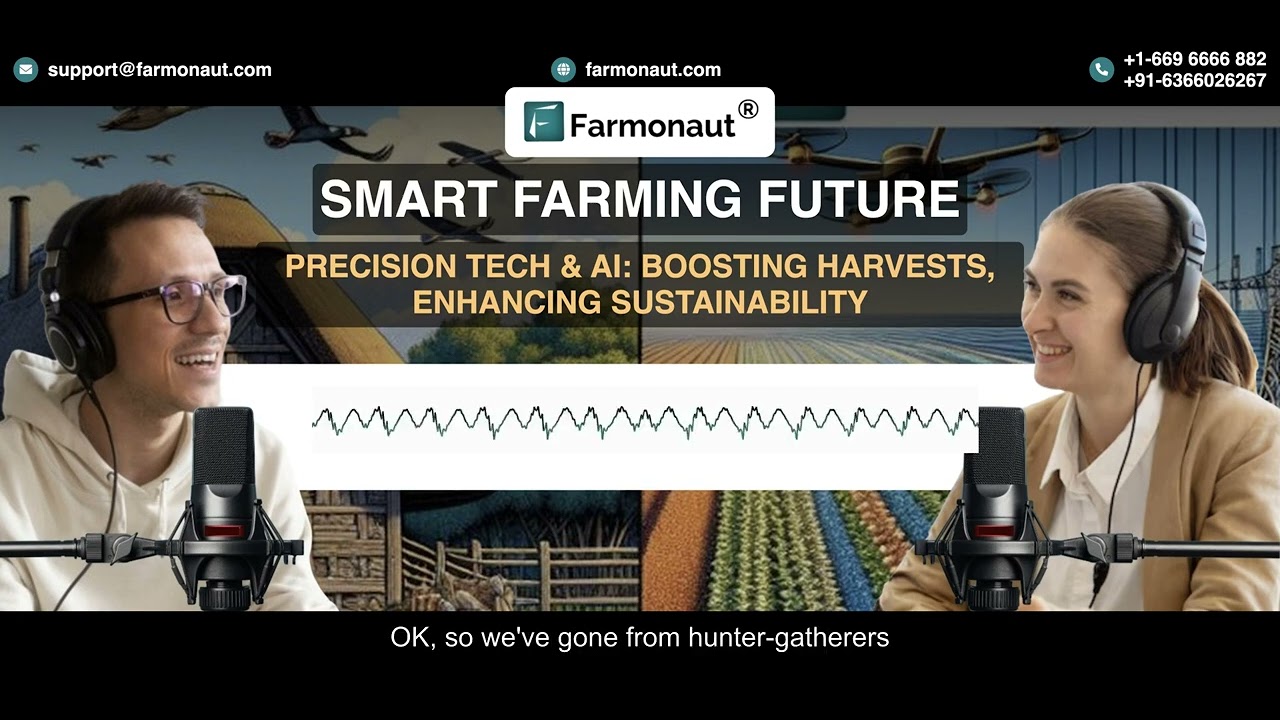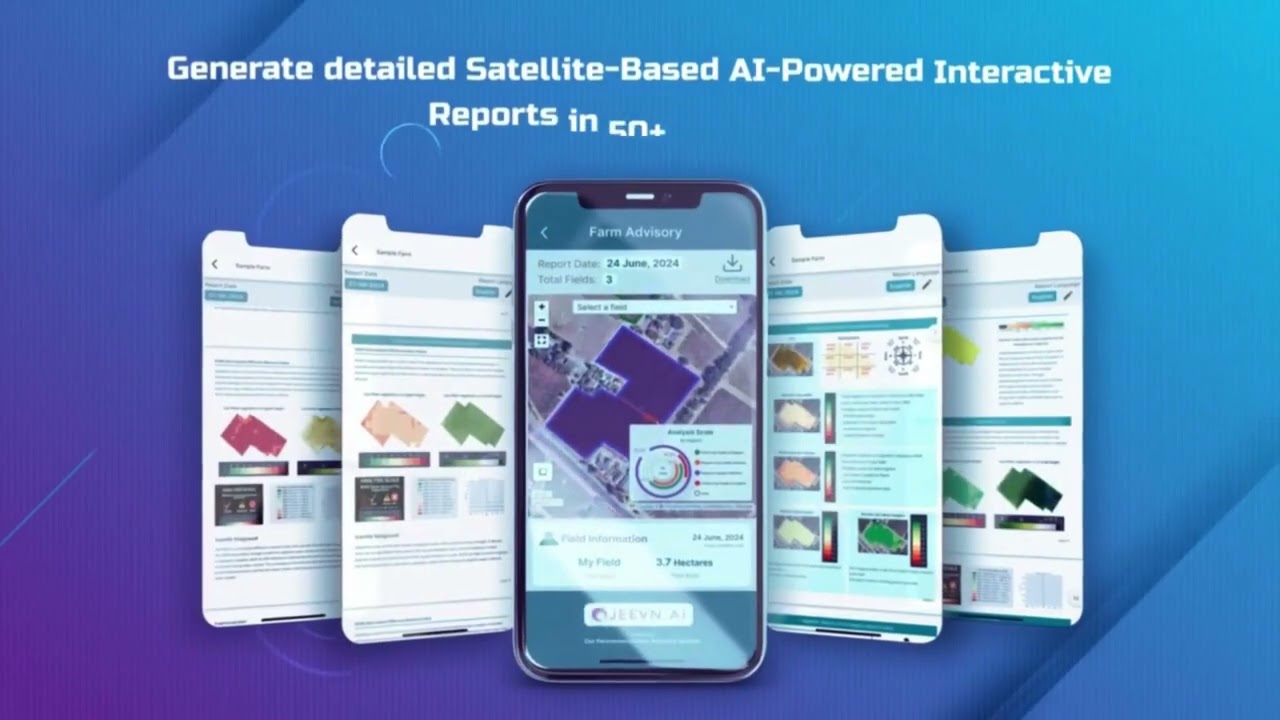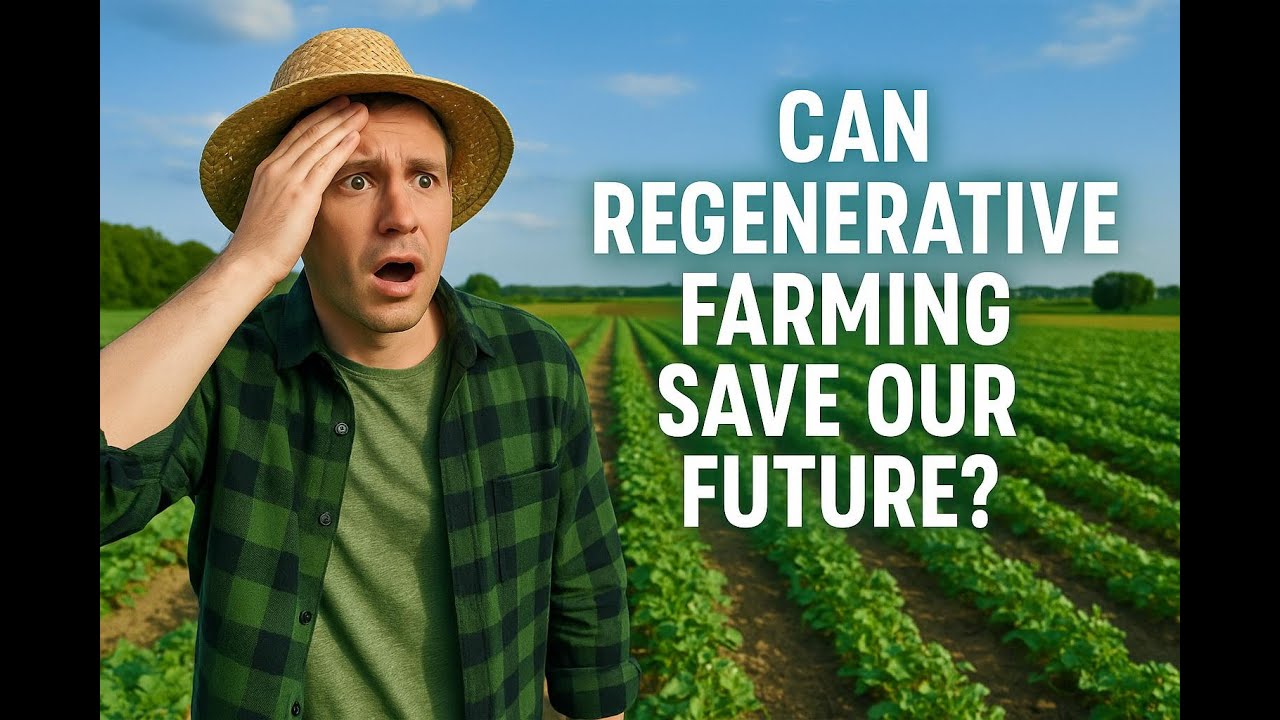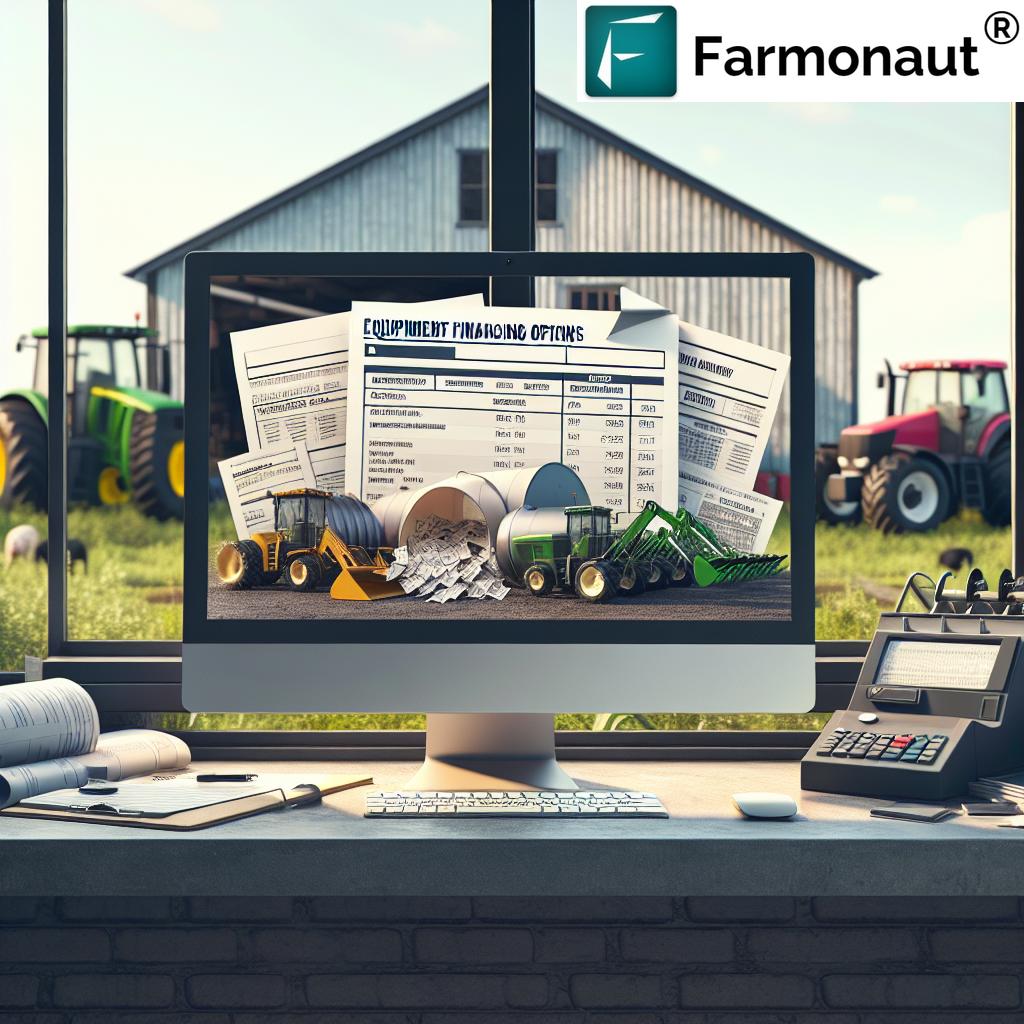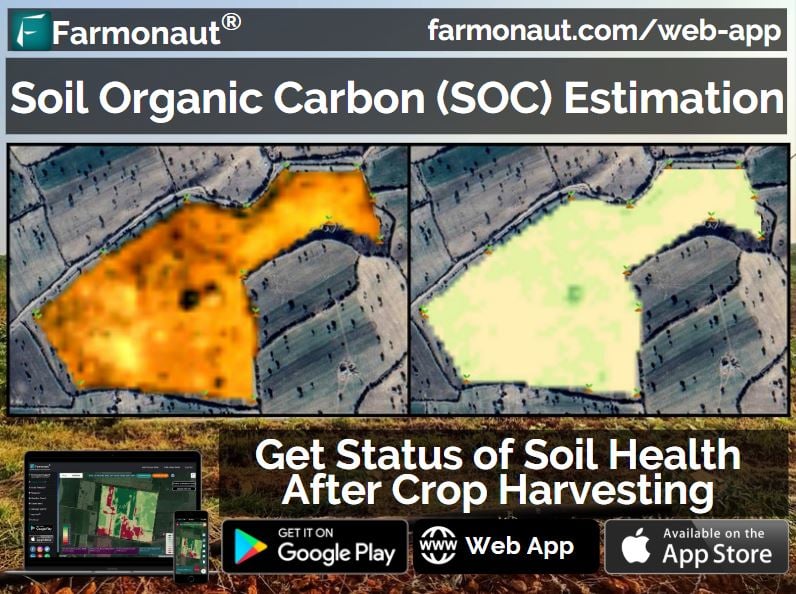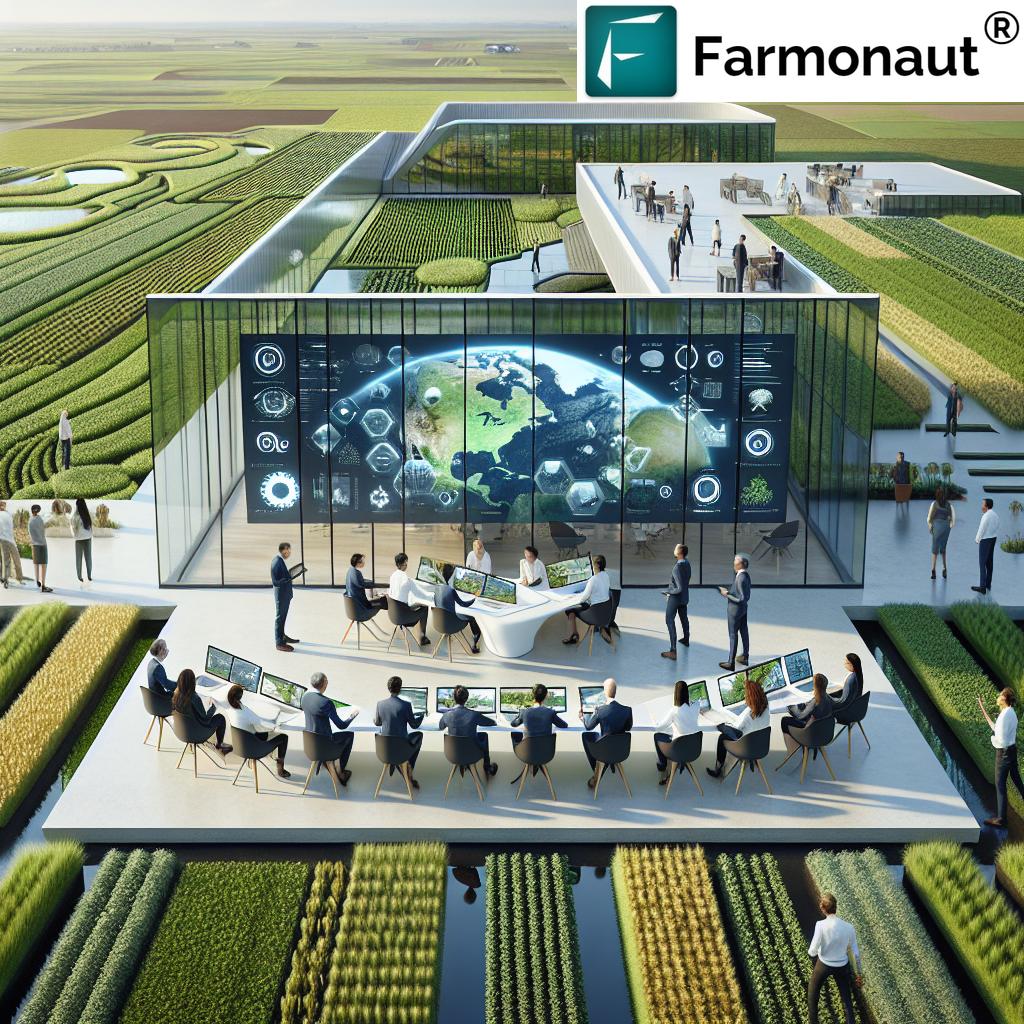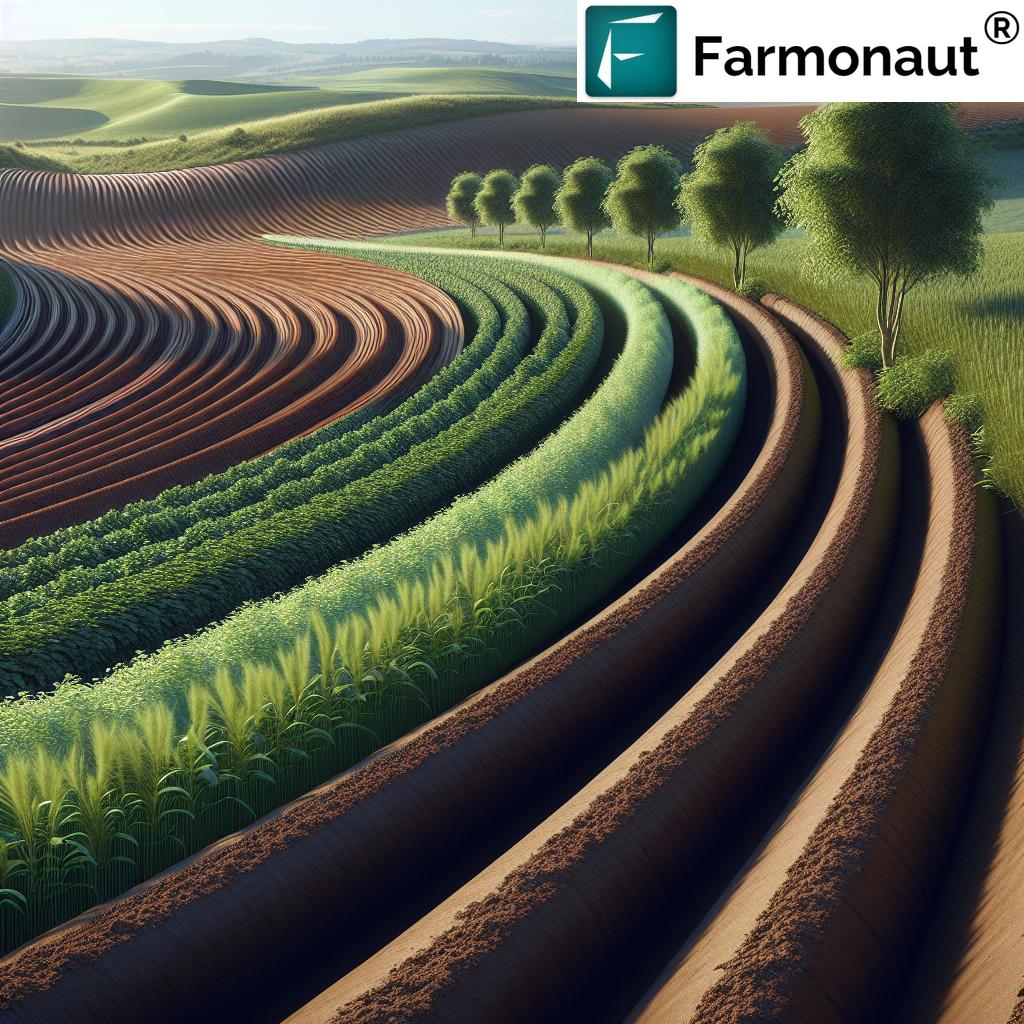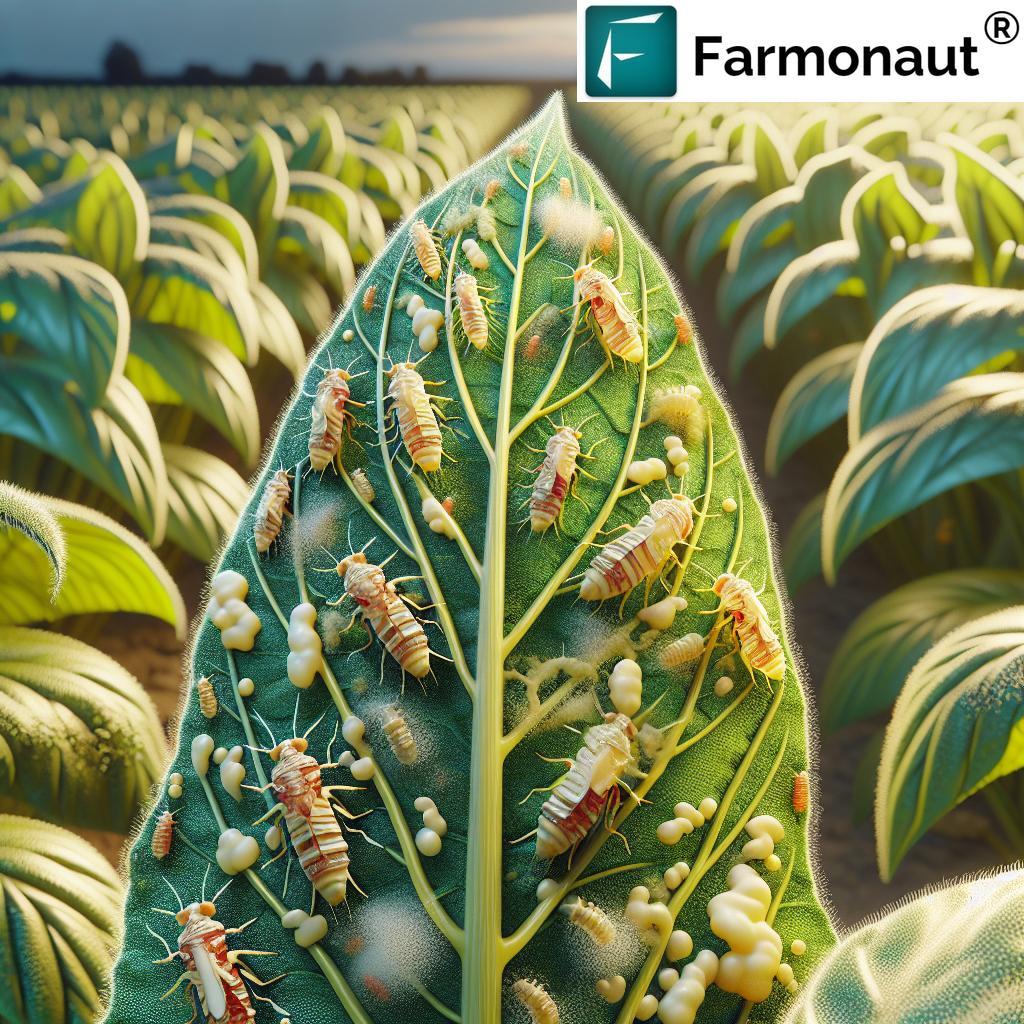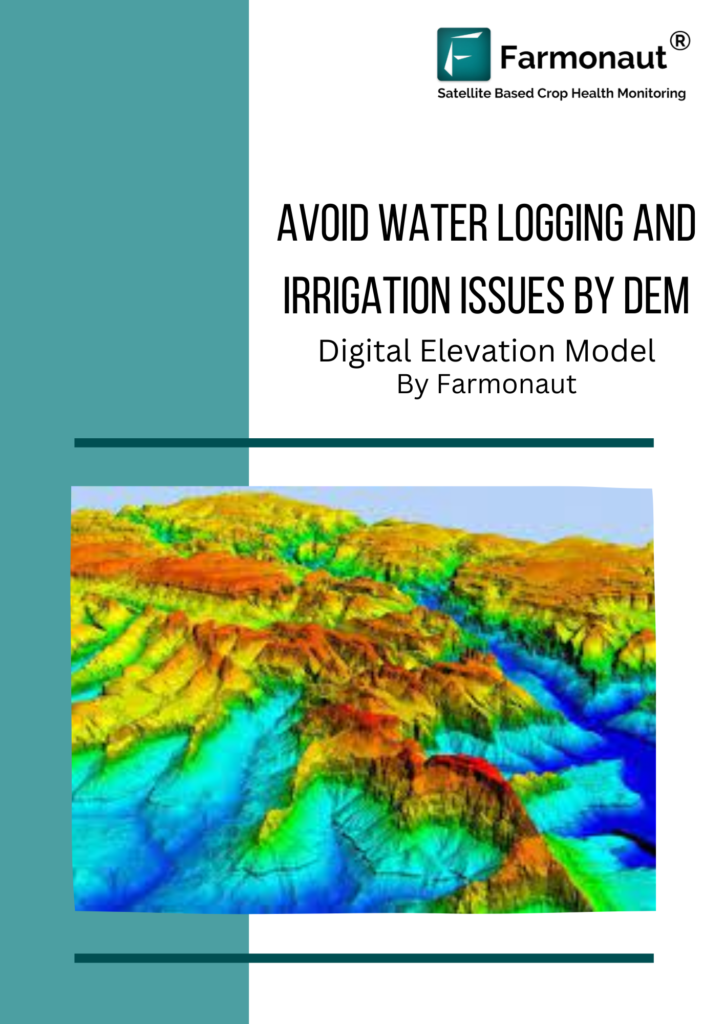Table of Contents
- Introduction
- Understanding Agriculture Production
- Agriculture Production Process: Key Steps and Modern Innovations
- Comparative Overview Table: Traditional vs. 2025 Sustainable Practices
- 2025 Innovations Shaping Production Agriculture
- The Critical Role of Forestry in Agriculture Production
- Challenges Facing Agriculture Production in 2025
- Opportunities and Future Directions in Agriculture Production
- Empowering 2025 Sustainable Innovations with Farmonaut Solutions
- FAQ: Agriculture Production Process & Sustainable Innovations
- Conclusion: The Future of Agriculture Production
“By 2025, over 60% of farms worldwide are expected to adopt precision agriculture technologies for sustainable production.”
Agriculture Production Process: 2025 Sustainable Innovations
The Agriculture Production Process in 2025: Innovations and Sustainable Practices Shaping the Future of Farming
Agriculture remains the backbone of global food security, rural livelihoods, and economic development. In 2025, the agriculture production process is experiencing a revolutionary transformation, integrating advanced technologies, sustainable practices, and innovative methodologies. These advancements aim to increase productivity, enhance resilience, and ensure the responsible use of resources to secure food for our growing population while preserving the environment.
This article explores the comprehensive landscape of agriculture production, focusing on the production process, critical components, modern techniques, and the challenges and opportunities that define production agriculture in 2025.
Understanding Agriculture Production: The Foundation of Food Security in 2025
Agriculture production refers to the cultivation of crops, the rearing of animals, and the management of forestry resources to create food, fiber, fuel, and other vital products. Production in agriculture encompasses every step: from initial soil preparation, planning, and planting to harvesting, processing, and distribution.
This comprehensive process in agriculture forms the essence of production agriculture. Both farming and forestry are integral. In forestry, sustainable management supports timber supply and environmental balance, while in farming, crop and livestock production address our nutritional needs.
- Crop Production: Includes the cultivation of grains, vegetables, fruits, and bioenergy crops. The choice of varieties and the sequence of practices directly affect yield and quality.
- Livestock Production: Involves rearing animals for meat, dairy, eggs, and fiber. Animal health, breeding, and nutrition are critical elements.
- Forestry Production: Focuses on sustainable management of forest resources for both timber and non-timber products.
By precisely managing each component, farmers and stakeholders can enhance productivity, reduce challenges, and meet the demands of a growing population.
The Agriculture Production Process in 2025: Key Steps and Modern Innovations
Let’s walk through each key step of the agriculture production process with a 2025 perspective, highlighting how modern technologies and sustainable practices are redefining each stage.
1. Planning and Land Preparation
- Planning: Selection of crop or livestock types using data on market demand, weather patterns, soil conditions, and resource availability. Digital planning tools (e.g., AI-based platforms) enable informed decision-making.
- Land Preparation: Advanced machinery and satellite-guided tools for plowing, tilling, and optimizing soil health. Soil sensors provide real-time feedback on fertility, moisture, and organic matter content.
- Environmental Impact Reduction: Conservation tillage and cover cropping are utilized to enhance soil structure, reduce erosion, and increase carbon sequestration.
2. Selection and Planting of Seeds or Livestock
- Seeds: Preference for genetically improved, climate-resilient, and biofortified varieties to boost yields and nutritional value.
- Precision Planting: Utilization of GPS-guided seed drills, drones, and mechanical planters to ensure optimal seed placement, depth, and germination rates.
- Animal Husbandry: Selection of disease-resistant breeds; use of AI to forecast optimal breeding cycles and facilitate genetic improvements.
3. Crop Management and Animal Husbandry
- Irrigation Management: Smart irrigation systems (drip or sprinkler) equipped with soil moisture sensors and automated controls to preserve water. Data-driven irrigation scheduling aligns with real-time weather and soil data.
- Fertilization: Variable-rate application of fertilizers using AI analytics and multispectral satellite data to fine-tune input levels.
- Pest and Disease Control: Integrated pest management (IPM) combines biological controls, precision pesticide application, and smart scouting with drones.
- Animal Husbandry: Automated feeding systems, biosensors for health monitoring, and AI for diet optimization.
- Soil Health: Regular monitoring using in-field sensors and satellite imagery for carbon footprinting and soil organic carbon mapping.
4. Harvesting and Post-Harvest Handling
- Harvest Timing: Optimized using AI predictions from crop monitoring platforms, ensuring maximum yield and product quality.
- Mechanized Harvesting: Drones and robotic harvesters reduce labor shortages and minimize post-harvest losses.
- Post-Harvest Handling: Use of controlled atmosphere storage, rapid cooling, and automated sorting and grading improves shelf life and reduces waste.
5. Processing, Value Addition, and Distribution
- Processing: Automation in milling, packaging, and conversion into value-added products (like biofuel and bioplastics).
- Market Access and Distribution: Use of digital platforms, blockchain for supply chain transparency, and cold chain solutions to maintain quality during distribution.
- Traceability: Blockchain-powered systems ensure traceability from farm to table, enhancing consumer trust—see Farmonaut Product Traceability.
The Impact of Each Step on Productivity, Resource Use, and Sustainability
Each step of the agriculture production process is now data-driven, aiming to optimize resource use, reduce environmental impact, and boost yield and product quality. The integration of technology, precision tools, and sustainable approaches is enabling production agriculture to move beyond conventional limitations and develop new standards for food security and environmental stewardship.
“Automated irrigation systems can reduce water usage in agriculture by up to 30% compared to traditional methods by 2025.”
Comparative Overview Table of Traditional vs. 2025 Sustainable Practices in Agriculture Production Process
| Production Step | Traditional Practice | 2025 Sustainable Innovation | Technology/Method | Estimated Yield Improvement (%) | Estimated Resource Savings (Water/Energy) |
|---|---|---|---|---|---|
| Soil Preparation | Tillage by tractor/animal, blanket fertilizer application | Conservation tillage, targeted nutrient application, cover cropping | Soil sensors, satellite imaging | +8% | Water: 10% | Energy: 6% |
| Sowing/Planting | Manual seed sowing, standard seed Varieties | GPS/AI-driven seeders, genetically optimized varieties | AI, drones, satellite data | +15% | Water: 4% | Energy: 8% |
| Irrigation | Flood irrigation, static scheduling | Smart drip/sprinkler with automated controls, AI scheduling | Soil moisture sensors, IoT, AI | +10% | Water: 30% | Energy: 15% |
| Fertilization | Blanket fertilizer application | Variable Rate Application (VRA) | Satellite & soil analytics, AI-based modeling | +12% | Water: 6% | Energy: 9% |
| Pest Management | Routine pesticide sprays, chemical-intensive | Integrated pest management, targeted biocontrols, drone scouting | AI, drones, digital scouting | +13% | Water: 2% | Energy: 13% |
| Harvesting | Manual or conventional machine-based | Robotic/AI-assisted, sensor-guided timing | Robotics, AI prediction models | +10% | Water: 0% | Energy: 12% |
| Post-Harvest Handling | Traditional storage, manual sorting | Automated grading/storage, blockchain traceability | IoT storage, blockchain, AI | +14% | Water: 2% | Energy: 10% |
*Estimated benefits are industry-wide projections for 2025; actual results may vary based on crop, region, or farm scale.
2025 Innovations Shaping the Agriculture Production Process
2025 marks a pivotal time for production agriculture as key innovations are reshaping the process in agriculture from the ground up. These technologies not only enhance productivity and efficiency but also ensure environmental sustainability for the future.
Precision Agriculture: Data-Driven Decision Making
- Satellite Imaging & Remote Sensing: Fields are monitored using high-resolution satellite imagery, allowing precise assessment of vegetation health (e.g., NDVI), soil moisture, and crop stress.
- Drones and Sensors: Offer real-time field monitoring for enhanced pest and disease detection, crop vigor, and nutrient status.
- Yield Mapping: AI and machine learning analyze historical and live data to optimize planting, fertilizing, and harvesting strategies.
Artificial Intelligence & Machine Learning: Smarter Crop and Livestock Management
- Predictive Analytics: Forecast weather patterns, pest infestations, and plant diseases before they occur to enable proactive interventions.
- Robotics & Automation: Reduce the burden of labor shortages through self-driving tractors, robotic fruit pickers, and automated animal feeding.
- Decision Support: AI platforms offer real-time advisories and recommendations.
Sustainable and Regenerative Practices
- Regenerative Agriculture: Prioritizes soil health through cover cropping, crop rotation, reduced tillage, and organic amendments to boost biodiversity and carbon sequestration.
- Integrated Farming Systems: Combines crop, livestock, and agroforestry for ecological balance and income diversity.
- Nutrient Cycling: Circular use of farm waste as fertilizers.
Biotechnology & Genetic Engineering
- Genetic Breeding: Creation of crop varieties with drought, pest, and disease resistance using advanced breeding and CRISPR technology.
- Biofortification: Enhancement of nutritional value in staple crops (e.g., rice with added vitamin A) for improved food security.
Vertical and Urban Farming Techniques
- Space-Efficient Agriculture: Vertical farms and urban greenhouses offer high yields in limited space while drastically reducing water use and dependency on weather.
- Controlled Environments: Use of hydroponics, aquaponics, and climate regulation for year-round production.
Renewable Energy and Carbon Monitoring
- Solar, Wind, and Bioenergy: Reduce dependence on fossil fuels, mitigating greenhouse gas emissions.
- Carbon Footprinting: Real-time tracking of operational carbon emissions enables sustainable management and reporting.
Get started with Farmonaut’s precision agriculture solutions. Monitor crop health, optimize irrigation, and harness data-driven insights for better farming—anytime, anywhere!
The Critical Role of Forestry in Agriculture Production
Forestry production plays a vital part in the agriculture sector by providing ecosystem services: biodiversity conservation, climate mitigation, timber supply, and preserving soil health.
- Agroforestry: Integration of trees within cropping or livestock systems enhances land productivity and provides alternative income streams.
- Sustainable Forest Management: Monitoring forest health, combating illegal logging, and planning reforestation with the aid of digital technologies (like remote sensing).
- Non-Timber Products: Gums, resins, medicinal plants, and honey offer additional opportunities for farmers.
Advanced satellite monitoring helps maintain forest resources sustainably, supporting resilient agriculture against climate change and extreme weather events.
Challenges Facing Agriculture Production in 2025
Despite rapid progress, production agriculture continues to confront a host of challenges that influence the adoption and success of new practices and technologies:
- Climate Change: More frequent droughts, floods, and unpredictable weather patterns put yields and livestock health at risk.
- Resource Constraints: Water scarcity, soil degradation, and shrinking arable land threaten the scalability of production in agriculture.
- Labor Shortages: Urbanization and demographic transitions reduce available rural workforce, making automation essential.
- Market Volatility: Rapid commodity price changes, unpredictable global markets, and policy shifts impact farmer earnings.
- Environmental and Regulatory Pressure: Increasing demand for eco-friendly practices and regulatory requirements for sustainability.
- Access to Finance and Technology: Smallholders may struggle to afford modern innovations without affordable education and investments.
- Supply Chain Disruptions: Pandemic-related or environmental disruptions emphasize the need for digital traceability and resilient distribution systems.
Opportunities and Future Directions in Agriculture Production
The future of agriculture production is driven by innovation and resistance to disruption. Significant opportunities for improvement include:
- Climate-Smart Agriculture: Adopting mitigation and adaptation strategies to manage risks while improving efficiency and yields.
-
Digital Agriculture: Big data, AI, and blockchain are transforming everything from crop monitoring to supply chain transparency.
Access Farmonaut’s satellite & weather data API and developer docs for integration. - Policy Support & Capacity Building: Training, education, and funding will enable more farmers to benefit from modern systems.
- Circular Agriculture: Enhanced recycling of nutrients and resources promotes closed-loop systems and lowers environmental impact.
Empowering 2025 Sustainable Innovations with Farmonaut Solutions
In 2025, precision and sustainable farming are within reach for everyone thanks to new digital tools. At Farmonaut, we are committed to democratizing precisely these tools and making data-driven insights accessible and affordable for farmers and agribusinesses globally.
-
Satellite-Based Crop Health Monitoring:
We utilize multispectral satellite images and AI to monitor crop health, soil moisture, and field status, empowering you to make smart decisions about irrigation, fertilizer application, and pest management for improved yield and resource efficiency. -
Jeevn AI Advisory System:
Our AI-powered advisory system analyzes satellite data and weather, providing tailored recommendations to improve farm productivity and resilience. -
Blockchain-Based Traceability:
We enable full supply chain transparency with blockchain, so each stage from farm to market is secure, trusted, and auditable—promoting brand and consumer confidence. -
Resource & Fleet Management:
Efficient fleet logistics and equipment use help reduce costs, ensure safety, and streamline operations across large and small farms. -
Carbon Footprinting for Environmental Sustainability:
Our tools help monitor and reduce operational carbon emissions. Discover the benefits of real-time carbon tracking and meet modern sustainability standards. -
Large Scale & Plantation Management:
Manage thousands of hectares with digital mapping and multi-farm analytics, improving strategic decision-making for agribusinesses. -
Enabling Financial Access:
By providing crop loan verification and insurance support through satellite data, we help reduce risk, fraud, and improve financing opportunities for farmers.
Our subscription-based model ensures everyone—from individual farmers to governments—can scale precision agriculture according to their unique needs.
FAQ: Agriculture Production Process & 2025 Sustainable Innovations
What is the agriculture production process?
The agriculture production process includes all the steps required to grow crops or rear livestock—starting with planning, soil preparation, and planting, through management, harvesting, processing, and distribution. In 2025, each stage leverages modern technologies for greater efficiency and sustainability.
How does precision agriculture improve production agriculture?
Precision agriculture uses data (from satellites, IoT, and sensors) to optimize resource use—applying the right amount of water, fertilizer, or pesticide only where needed, maximizing yield and minimizing waste or environmental impact.
What is regenerative agriculture and why is it important for the future?
Regenerative agriculture restores soil health, boosts biodiversity, and increases carbon sequestration using methods like crop rotation, cover cropping, and limited tillage. It is essential for reversing soil degradation and building climate resilience.
How do drones and AI revolutionize modern farming?
Drones provide aerial views for rapid crop health assessments and precision spraying, while AI predicts pest outbreaks and weather patterns, automating farm management decisions and reducing labor requirements.
What are the environmental benefits of sustainable agriculture production?
Sustainable practices (like reduced chemical input, efficient irrigation, and renewable energy use) lower water and energy consumption, preserve soil and biodiversity, and reduce greenhouse gas emissions for a healthier planet.
How can blockchain help product traceability in agriculture?
Blockchain creates a secure, tamper-proof record of each stage in the supply chain, enhancing transparency, trust, and food safety for consumers and businesses alike.
How can I access Farmonaut’s technology?
Farmonaut’s platform is available via web, Android, iOS apps, or API access for advanced integration. Choose the channel that fits your workflow.
Conclusion: The Future of Agriculture Production
In 2025, the agriculture production process stands at a crossroads—combining innovative technology, sustainable practices, and data-driven methodologies to define the future of farming.
- By leveraging artificial intelligence, precision satellite monitoring, and blockchain transparency, modern farms can achieve higher yields, resource savings, and increased food security.
- Embracing regenerative agriculture and climate-smart strategies ensures resilient food systems that preserve our environment for generations to come.
- A holistic, integrated approach—spanning crops, livestock, and forestry—will empower stakeholders to thrive amid ongoing challenges.
- Platforms like Farmonaut play a pivotal role, delivering affordable, scalable solutions that blend advanced analytics, AI, and sustainability into every step of the agriculture production process.
The agriculture sector, always the backbone of rural livelihoods and economic development, is ready to lead us into a more sustainable, productive future. By understanding each process, embracing innovation, and staying committed to stewardship, we can feed the world—responsibly and resiliently.


